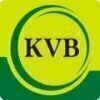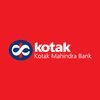Credit Manager
200+ Credit Manager Interview Questions and Answers

Asked in HDFC Bank

Q. If a client comes to take a loan & he haven't got any type of documents with him (primary or secondary), how will you deal with him? & Tell me first 5 things comes to your mind.
I would assess the situation and try to find alternative ways to verify the client's identity and creditworthiness.
Ask the client if there are any other forms of identification they can provide
Check if the client has any existing accounts or relationships with the bank
Ask for references or guarantors who can vouch for the client's credibility
Consider alternative credit scoring methods such as social media or utility bill payments
Evaluate the risk and potential consequences of...read more

Asked in ICICI Bank

Q. What are the most important ratios to analyze the balance sheet and profit and loss statement of a borrower?
The most important ratios to analyze balance sheet and profit loss statement of borrower are liquidity, solvency, and profitability ratios.
Liquidity ratios measure the borrower's ability to meet short-term obligations
Solvency ratios measure the borrower's ability to meet long-term obligations
Profitability ratios measure the borrower's ability to generate profits
Examples of liquidity ratios include current ratio and quick ratio
Examples of solvency ratios include debt-to-equity...read more
Credit Manager Interview Questions and Answers for Freshers

Asked in HDFC Bank

Q. A client wants a large loan to fund a long-term project. What documents/information would you check, and how would you handle the situation?
I will check the client's financial history, credit score, business plan, collateral, and repayment ability.
Check the client's credit score and financial history to assess their creditworthiness
Evaluate the client's business plan and long-term project to ensure it is viable and profitable
Assess the client's collateral to determine its value and potential for resale
Verify the client's repayment ability through income statements, cash flow projections, and other financial docum...read more

Asked in ICICI Bank

Q. Which clauses in 3CD are important when sanctioning a loan?
Important clauses in 3CD for loan sanctioning
Clause 4 - Purpose of loan
Clause 5 - Amount of loan
Clause 6 - Repayment terms
Clause 7 - Security for loan
Clause 8 - Interest rate
Clause 9 - Default and consequences

Asked in ICICI Bank

Q. What are the key skills of a credit manager?
Key skills of a credit manager include financial analysis, risk assessment, communication, and negotiation.
Strong financial analysis skills to evaluate creditworthiness of potential borrowers
Ability to assess and manage risk effectively
Excellent communication skills to interact with clients and colleagues
Negotiation skills to establish favorable terms and conditions
Knowledge of relevant laws and regulations
Attention to detail and ability to work under pressure
Proficiency in f...read more

Asked in ICICI Bank

Q. 1. What are Operating Cycle and Working Capital Cycle? How does calculate it?
Operating cycle and working capital cycle are measures of a company's efficiency in managing its cash flow.
Operating cycle is the time it takes for a company to convert its inventory into cash. It is calculated as the sum of the inventory holding period and the accounts receivable collection period.
Working capital cycle is the time it takes for a company to convert its current assets into cash to meet its current liabilities. It is calculated as the sum of the operating cycle...read more
Credit Manager Jobs




Asked in ICICI Bank

Q. If someone's income is less than the EMI, should they take a loan?
No, someone earning less than EMI should not take a loan.
Taking a loan when earning less than the EMI can lead to financial strain and difficulty in repayment.
It is important to have a stable income that can comfortably cover the loan repayment.
If someone is already struggling to meet their financial obligations, taking on additional debt can worsen their situation.
It is advisable to explore alternative options such as increasing income or reducing expenses before considering...read more

Asked in HDFC Bank

Q. What kind of information or documents will you check before sanctioning a loan?
Before sanctioning a loan, I check various information and documents.
Credit score and credit history of the borrower
Income and employment details of the borrower
Collateral offered by the borrower
Purpose of the loan
Legal documents like ID proof, address proof, and income proof
Bank statements and tax returns
Credit reports from credit bureaus
Business plan and financial statements for business loans
Share interview questions and help millions of jobseekers 🌟


Asked in Utkarsh Small Finance Bank

Q. Which document is mandatory in the case of a partnership firm?
Partnership deed is mandatory for a partnership firm
Partnership deed is a legal document that outlines the terms and conditions of the partnership
It includes details such as the name of the firm, the names of the partners, their capital contributions, profit sharing ratio, etc.
It is important to have a partnership deed to avoid any disputes or misunderstandings between the partners
It is also required for registration of the partnership firm with the Registrar of Firms
Partners...read more

Asked in ICICI Bank

Q. What documents are needed to complete a term loan file?
Documents required for a term loan file.
Loan application form
Income tax returns
Bank statements
Financial statements
Credit report
Collateral documents
Legal documents

Asked in AU Small Finance Bank

Q. What information do you verify in CIBIL reports?
CIBIL check includes credit score, credit history, loan/credit card repayment history, defaults, and outstanding debts.
Credit score
Credit history
Loan/credit card repayment history
Defaults
Outstanding debts

Asked in ICICI Bank

Q. How do you classify a borrower's account into SMA0, SMA1, and SMA2?
The classification of borrower accounts into SMA0, SMA1, and SMA2 is based on the number of days the account is overdue.
SMA0: Account is not overdue
SMA1: Account is overdue for 1-30 days
SMA2: Account is overdue for 31-60 days

Asked in ICICI Bank

Q. 3. What is Current Ratio and it's relevance? What is standard Current Ratio?
Current Ratio is a financial ratio that measures a company's ability to pay its short-term liabilities with its short-term assets.
Current Ratio = Current Assets / Current Liabilities
It indicates the liquidity of a company
A higher current ratio is generally considered better
Standard current ratio varies by industry
For example, a current ratio of 2:1 is considered good for most industries

Asked in ICICI Bank

Q. What is the difference between a concurrent audit and a statutory audit?
Concurrent audit is conducted during the course of business operations, while statutory audit is conducted at the end of the financial year.
Concurrent audit is performed concurrently with the operations of the organization.
Statutory audit is conducted to ensure compliance with legal and regulatory requirements.
Concurrent audit helps in detecting and preventing frauds and errors in real-time.
Statutory audit provides an independent opinion on the financial statements of the com...read more

Asked in Utkarsh Small Finance Bank

Q. What are the three pillars of loan eligibility?
The three pillars of loan eligibility are credit score, income, and collateral.
Credit score: A good credit score indicates a borrower's ability to repay the loan.
Income: Sufficient income is necessary to ensure timely loan repayments.
Collateral: Providing collateral reduces the risk for the lender and increases loan eligibility.
Example: A person with a high credit score, stable income, and valuable collateral has a higher chance of loan approval.

Asked in ICICI Bank

Q. What is DSCR and it's calculation? Ideal Ratio and it's relevance.
DSCR is Debt Service Coverage Ratio, a measure of a company's ability to repay its debt. It is calculated by dividing net operating income by total debt service.
DSCR is a financial ratio used by lenders to assess the creditworthiness of a borrower.
It measures the cash flow available to cover debt payments.
The formula for DSCR is: DSCR = Net Operating Income / Total Debt Service.
A higher DSCR indicates a better ability to repay debt.
An ideal DSCR ratio varies depending on the ...read more

Asked in Ess Kay Fincorp

Q. How would you determine the appropriate EMI amount for a person, considering their income and expenses?
Calculating EMI involves assessing income, expenses, and financial stability to determine a suitable repayment amount.
Assess total monthly income: Include salary, bonuses, and any other sources.
Calculate total monthly expenses: Rent, utilities, groceries, and other obligations.
Determine disposable income: Subtract total expenses from total income.
Apply the 50/30/20 rule: Allocate 50% for needs, 30% for wants, and 20% for savings/debt repayment.
Example: If monthly income is $5...read more

Asked in Mahindra & Mahindra

Q. What is an ethical dilemma that you have come across? How did you manage it?
I once faced an ethical dilemma when a client asked me to approve a loan despite knowing they had a poor credit history.
I explained the risks involved in approving the loan and the potential consequences for both parties.
I suggested alternative options such as a smaller loan or a longer repayment period.
I consulted with my superiors and legal team to ensure I was making the right decision.
Ultimately, I declined the loan application as it was not in the best interest of the cl...read more

Asked in Utkarsh Small Finance Bank

Q. How do you assess the income of self-employed non-professional (SENP) individuals?
Assessing income of SENP segment
Analyze income sources such as salary, investments, and rental income
Consider debt-to-income ratio and credit history
Look at demographic data and economic trends in the area
Use financial statements and tax returns to verify income
Compare income to expenses and debt obligations

Asked in Karur Vysya Bank

Q. What are KYC documents? Is PAN card a KYC document ?
KYC documents are documents required for verifying the identity of customers. PAN card is a KYC document.
KYC documents are Know Your Customer documents used for verifying the identity of customers.
Examples of KYC documents include Aadhaar card, passport, driver's license, and voter ID card.
PAN card is also considered a KYC document as it contains details such as name, date of birth, and photograph of the individual.

Asked in HDFC Bank

Q. If someone approaches you with a loan application, how would you decide whether to lend or not?
I would assess the applicant's creditworthiness based on their credit history, income, and debt-to-income ratio.
Check the applicant's credit score and credit report
Verify their income and employment status
Calculate their debt-to-income ratio
Consider any past delinquencies or bankruptcies
Assess the purpose of the loan and the likelihood of repayment
Review any collateral offered as security

Asked in IIFL SAMASTA

Q. How to underwriting case to case, and how to the read cibil, and high marked, Experian Equifax Reports, and credit process, and type of business margin, then asked pd process, and credit appraisal process, and...
read moreUnderwriting process involves analyzing credit reports, business margins, and calculating creditworthiness.
Underwriting involves analyzing credit reports from CIBIL, Experian, and Equifax
Assessing the type of business and its margins is important in determining creditworthiness
Credit appraisal process involves evaluating the borrower's financial history and ability to repay
Calculations such as CFA are used to determine creditworthiness
PD process is used to assess the probabil...read more

Asked in IDFC FIRST Bank

Q. How many cases can you process on a daily basis?
I can process around 20-25 cases on a daily basis depending on the complexity of the cases.
The number of cases processed depends on the complexity of the cases.
On average, I can process around 20-25 cases per day.
I prioritize cases based on their urgency and importance.

Asked in ICICI Bank

Q. What is the difference between repo and reverse repo rate?
Repo rate is the rate at which RBI lends money to banks, while reverse repo rate is the rate at which RBI borrows money from banks.
Repo rate is higher than reverse repo rate
Repo rate is used to control inflation
Reverse repo rate is used to control money supply
Example: If RBI increases repo rate, banks will increase their lending rates to customers

Asked in ICICI Bank

Q. Tell me about profit and loss ratios.
Profit and loss ratios are financial metrics used to assess the profitability of a company.
Profit ratio measures the percentage of profit earned on sales.
Gross profit ratio is calculated by dividing gross profit by net sales.
Net profit ratio indicates the percentage of net profit earned on sales.
Operating profit ratio measures the profitability of core operations.
Return on investment (ROI) is a common profitability ratio.

Asked in ICICI Bank

Q. What are the different types of credit that banks offer?
Banks offer various types of credit including personal loans, credit cards, mortgages, and business loans.
Personal loans: unsecured loans for personal use
Credit cards: revolving credit with interest rates and rewards
Mortgages: loans for purchasing or refinancing a home
Business loans: loans for small or large businesses
Lines of credit: flexible credit for businesses or individuals
Auto loans: loans for purchasing a vehicle

Asked in Aavas Financiers

Q. How do you justify a customer's creditworthiness?
Credit of a customer can be justified by evaluating their credit history, financial stability, and repayment capacity.
Evaluate the customer's credit history, including their payment patterns, outstanding debts, and any previous defaults.
Assess the customer's financial stability by analyzing their income, assets, and liabilities.
Consider the customer's repayment capacity by reviewing their cash flow, debt-to-income ratio, and ability to meet financial obligations.
Verify the cu...read more

Asked in ICICI Bank

Q. What is an important yardstick in the assessment of a Term Loan?
The repayment capacity of the borrower is the most important yardstick in assessment of Term Loan.
Repayment capacity of the borrower is assessed through various financial ratios such as Debt Service Coverage Ratio (DSCR), Interest Coverage Ratio (ICR), and Loan to Value Ratio (LTV).
The borrower's credit history, income, and assets are also considered in the assessment.
The purpose of the loan, the industry in which the borrower operates, and the economic conditions of the coun...read more

Asked in Karur Vysya Bank

Q. How do you check eligibility for a salaried employee?
Eligibility for a salaried employee is checked by verifying their employment status, income level, and credit history.
Verify employment status through pay stubs or employment verification letter
Check income level through recent pay stubs or tax returns
Review credit history through credit reports from bureaus like Equifax or TransUnion

Asked in ICICI Bank

Q. How do you determine the creditability of a borrower?
The creditability of a borrower can be determined by analyzing their credit history, financial statements, and references.
Check credit score and credit report
Analyze financial statements such as income statement and balance sheet
Verify references provided by the borrower
Consider the borrower's industry and market conditions
Assess the borrower's ability to repay the loan
Evaluate collateral offered by the borrower
Interview Questions of Similar Designations
Interview Experiences of Popular Companies






Calculate your in-hand salary
Confused about how your in-hand salary is calculated? Enter your annual salary (CTC) and get your in-hand salary


Reviews
Interviews
Salaries
Users










